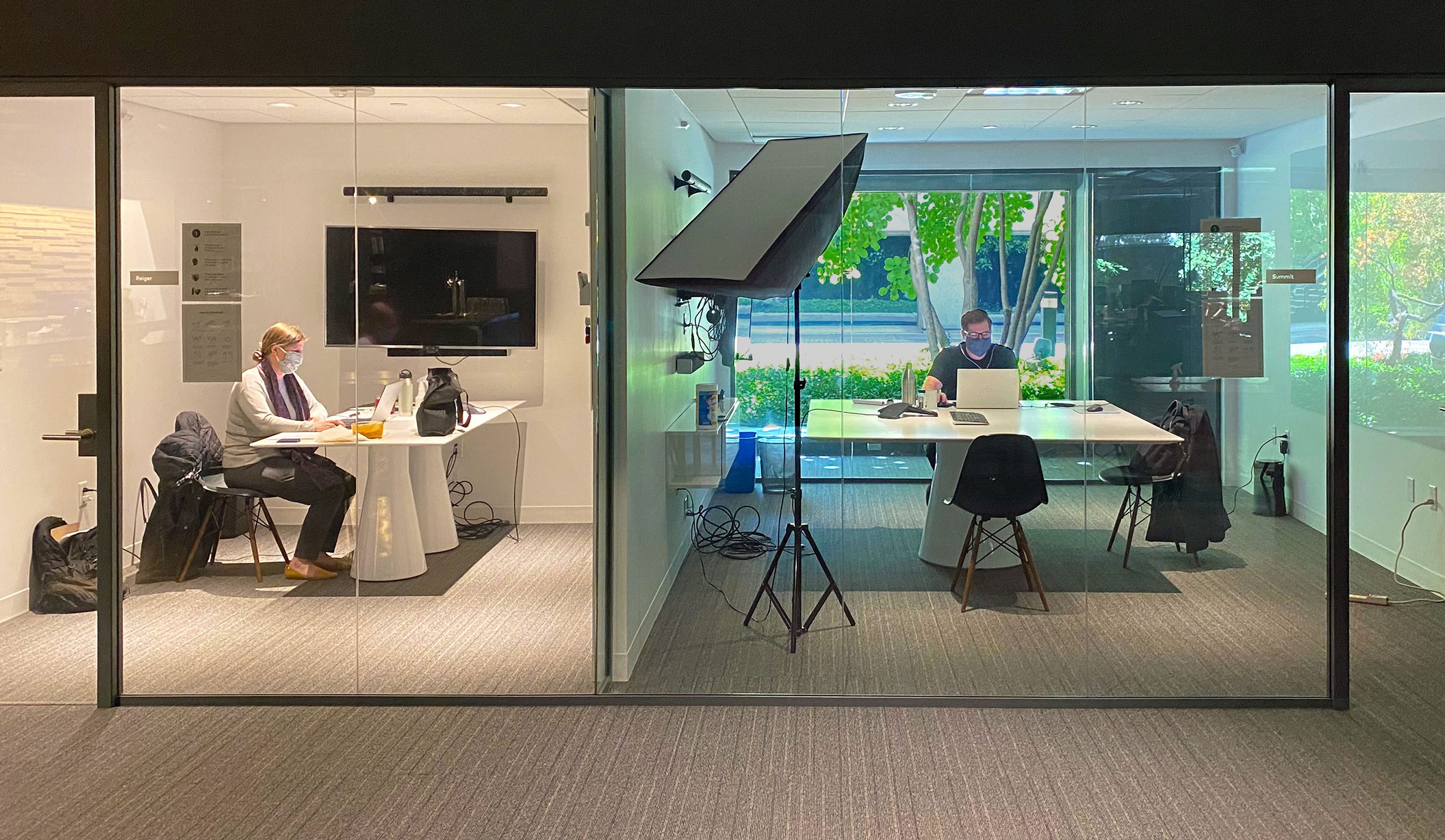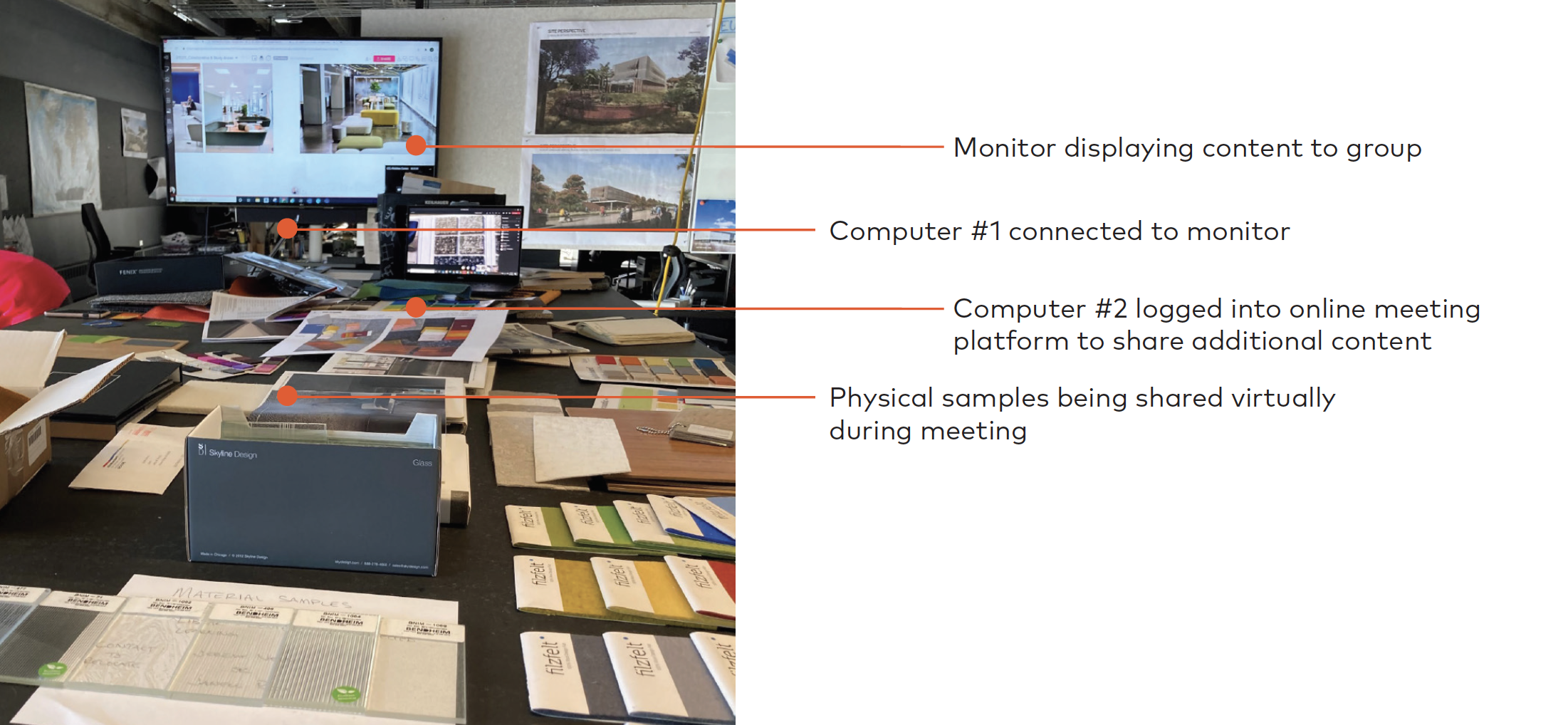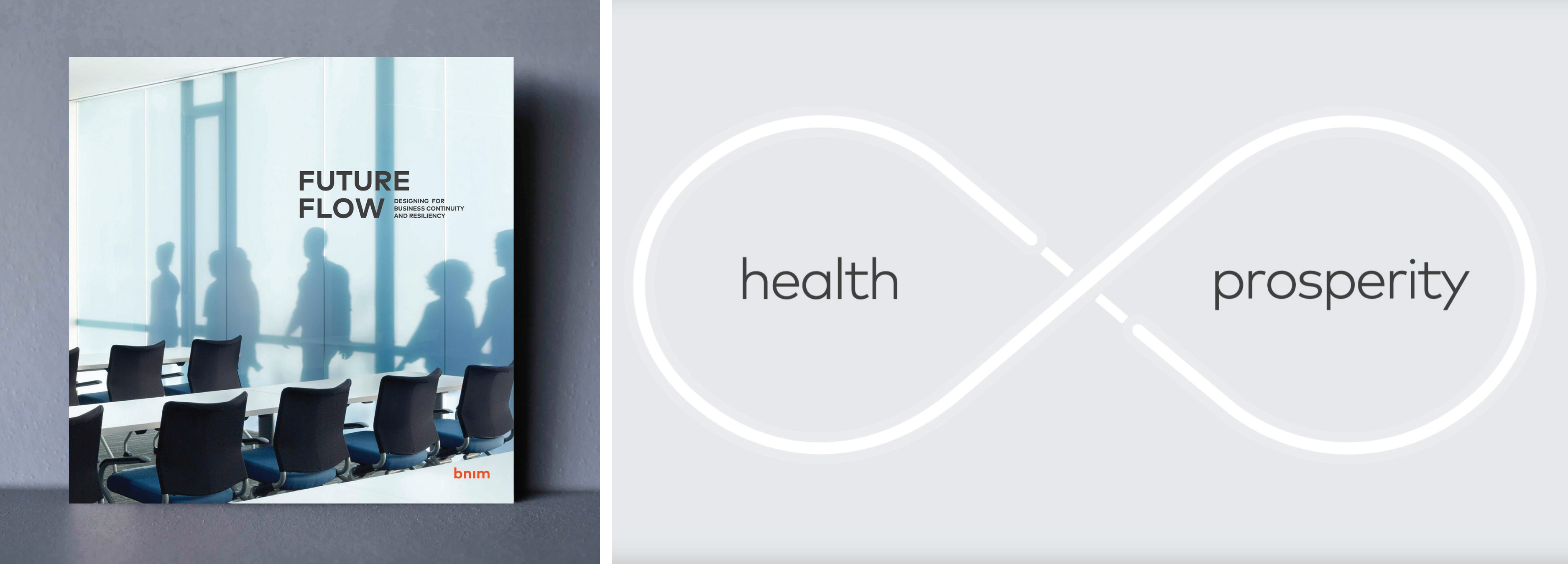
Hybrid Mode – Is it here to stay?
Over one year ago, BNIM moved our offices online to remote work, navigating a rapid switch to the digital realm for the health and wellness of our colleagues, families, and communities. This past year called on our practice to think creatively about how we could effectively adapt and hone our firm’s approach to workplace flexibility for the future. In this transition to a new mode of interaction and collaboration for our firm, we learned the ins and out of virtual meeting platforms, leveraged our work with digital tools and resources for design collaboration and presentations, and emphasized strong communication to stay connected with our clients and with each other.
Our transition back into BNIM’s offices will be an evolving and refining process. Along the way, our team may be in different places and hold different perspectives. What feels exciting for some will produce anxiety for others, and that is okay. Everyone is free to choose what feels right for themselves and their families as situations and schedules can, and likely will, change over time. We are prioritizing a healthy, safe, and organized transition back to our offices. We will continue to put the lessons of the past year into practice with generosity, intentionality, and patience for others and for ourselves in this work mode transition.
How BNIM plans to return to our offices:
BNIM transitioned from fully remote work to ‘Hybrid Mode’ during the past year– meaning BNIM’s offices were open at limited capacity, allowing staff members to return to the workplace periodically as needed while other staff remained working from home. BNIM’s Back to Workplace team developed a workplace handbook informed by CDC guidelines to help staff navigate our offices in Kansas City, Des Moines, and San Diego safely. These guidelines will be utilized across our offices as we progress to our next phase of returning to the workplace.
Below are key steps we are taking as a firm to ensure the return to our offices is focused on employee health and safety, mental and emotional well-being, equity and inclusion, and future flexibility.
– Continuing to follow current CDC guidance across our office locations with respect to masks, in-person meetings, and office visitors
– Providing health resources located at office entrances including masks, sanitizer, and thermometers for self-health screening
– Providing supplies located in each conference room and meeting area with protocols for cleaning and disinfecting shared office spaces after use
– Listening to our BNIM staff and keeping ongoing communication through firmwide surveys, studio dialogues, and one-on-one advocate conversations to enhance equity and inclusivity in practice
– Providing mental health resources through BNIM’s medical provider and educational programs
– Implementing a Flexible Work Arrangements policy in which BNIM is committed to helping employees balance the responsibilities of work, family and other life-related issues and personal well-being by offering a number of possible flexible work arrangements.
– Continuing to invest in technology but also refine our practices to be more intentional and inclusive working collaboratively
7 Practices we recommend:
As some BNIMers have returned to the office this May and others remain working virtually, we are focused on best practices for working collaboratively in Hybird Mode. BNIM’s project teams have developed and tested a few key tips in the past months for conducting hybrid meetings between colleagues and clients.
– Determine the best virtual platform for all team members to communicate, whether that be Zoom, Microsoft Teams, GoTo Meeting, or another platform
– Allow 15 minutes for technology set up prior to the meeting start time
– Continue to conduct meetings as though they are virtual, engaging with the virtual participants on screen and using the chat feature to send images and links as needed
– Have mobile devices available to snap a quick photo of any in-office design materials or sketches over email or chat platform, allowing virtual participants to see any physical materials being discussed
– For in-office personnel, consider holding meetings in an open space, being attentive to how many individuals plan to attend to accommodate social distancing
– Disinfect and organize meeting spaces after use
– Be Intentional with work collaborations between colleagues, clients, and industry partners in Hybrid Mode, conducting meetings and discussions as though we are all still working virtually

Future Flow – Designing for Business Continuity and Resiliency:
Our industry has faced important new considerations in design during this significant shift in the way individuals utilize built environments, specifically in the workplace. In effort to understand and address these changes in the workplace, BNIM developed a new design initiative for the future of business continuity and resiliency, called Future Flow.
As BNIM Principal, Laura Lesniewski describes, “it has also given us a glimpse into how our global community can respond in unison and with care for each other … with generosity and within a different kind of flow. As we move ourselves out of our homes and back to the workplace and marketplace, the generosity of space that we now find more natural may be a guide to what we were looking for all along.”


